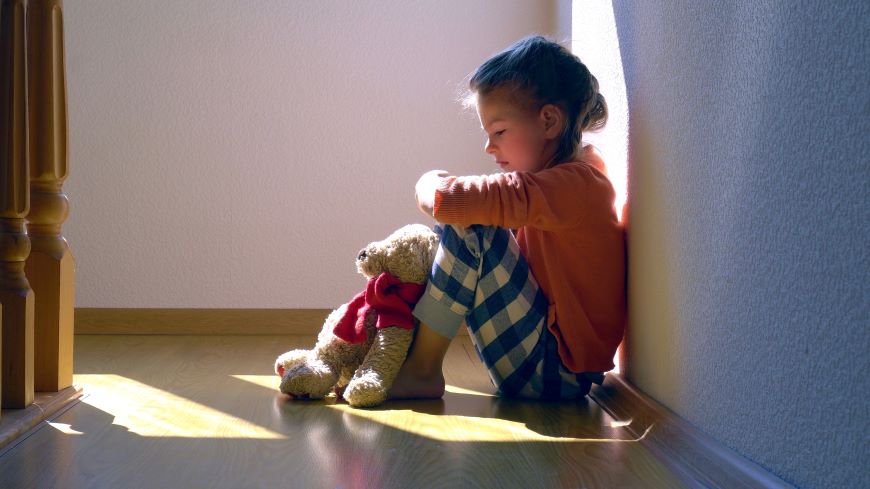Violence risk factors radiate outward in overlapping circles from individual. Starting with the culture and working inward, the circles include the community, neighborhood, and school systems, the parents, and the individual. Although most violence is discovered behaviour, these same assorted concentric circles can contain risk factors that either increase or decrease the likelihood that abuse will be learned. Acknowledging the risk factors associated for child maltreatment is helpful in developing appropriate prevention and management intervention strategies, as well as trying to identify families that are most sure to receive from additional assistance.
Child neglect is a broad concept that encompasses a wide range of negative experiences for children, including inadequate or insufficient food availability, poor school attendance, and a lack of the necessary medical attention. In general, abandonment refers to the failure of necessary caretaking behaviour for a child’s proper growth, whereas other kinds of abuse frequently involve harmful acts committed against such a child.
The measurable instances, conditions, or happenings that increase the likelihood that a household will have poor performance in the future are known as risk factors for child maltreatment (Child Welfare Information Gateway, 2014; Masten & Wright, 1998). When combined with a lack of environmental triggers, they increase the likelihood of neglect and abuse of children.
Child abuse and neglect (also known as child maltreatment) are defined as any act of commission or negligence by a parent, caregiver, or other adult that causes harm, the potential for harm, or the threat of a child’s harm and 0-18 years of age, even if the harm is completely accidental (Gilbert et al., 2009). Corporal punishment, sexual abuse, psychological manipulation, neglect, or exposure to intimate partner violence is all examples of child abuse and neglect.
Child-related factors, parent/caregiver-related factors, sociological relationships, family dynamics, and going to trigger circumstances are all health issues for child abuse and neglect.
-
Risk elements
The following changes may make a person’s likelihood of becoming abusive:
- Neglected and abused as a child
- Illness, either physical or mental, such as depressive episodes or article stress disorder (PTSD)
- A developmentally or physiologically disabled child in the family
- Financial difficulty, unemployment, or poverty
- Isolation in the socio cultural or extended family
- Unmistakable comprehension of developmental psychology and parenting abilities
- Signs and symptoms of sexual abuse
Inappropriate sexual behaviour or knowledge for such child’s age
A sexually transmissible infection or pregnancy
Pain in the genital or anal region, bleeding, or injury
allegations of child sexual abuse
Sexually inappropriate behaviour with other children
Sexual exploitation: Any sexual behavior with a child is considered child sexual abuse. Sexual contact, including intentional inappropriate touching, oral-genital contact, or intercourse, can be involved. Nonintrusive sexual abuse of a child can also include disclosing a child to sexual intercourse or pornographic materials; observing or trying to film a child in a sexual context; inappropriate touching of a child; or child prostitution, including sex trafficking.
-
Signs and symptoms of emotional abuse
Emotional development that is delayed or inappropriate
Loss of self-esteem or confidence
Social withdrawal or loss of interest or zeal
Depression
Going to refuse to go school or use the bus, for example.
Appears to be desperate for affection
A drop in academic performance or a losing interest in school
Developmental skills previously acquired are lost.
Emotional exploitation: Emotional child abuse is defined as causing harm to an individual’s self or emotional well-being. It includes physical and emotional abuse, such as belittling or verbally abusing a child on a regular basis, in addition to isolating, ignoring, or refusing to accept a child.
-
Ignore warning signs and symptoms
Growth has been slow.
Excess weight combined with serious conditions that are not adequately addressed
Inadequate personal hygiene a lack of clothes and shoes or necessary items to encounter physical needs
Food hoarding or stealing
Poor school attendance record
Inadequate attention for medical, dental, or psychological problems, as well as a lack of necessary follow-up care
Neglect: Failure that provide sufficient nutrition, clothing, temporary housing, clean housing conditions, affection, close monitoring, education, or medical and dental care is considered child neglect.
-
Signs and symptoms of physical abuse
Injuries that are unexplained, including broken bones, fractured bones (fractures), or burns
Traumatic brain that do not fit the explanation
Injuries that is incompatible with the child’s ability to develop
- Medical exploitation: Medical child abuse happens when someone provides false information about a child’s illness that necessitates medical treatment, putting children at danger of injury and unwarranted medical care.
- Parental conduct
Appears to be unable to identify emotional and physical distress there in child and blames the newborn for the problems
Belittles or humiliates the child on a regular basis, and identifies the child in negative terms such as “utterly useless” or “evil”
Expects the child to pay attention to and care for the parent and appears envious of other close relatives who receive attention from the child.
Harsh physical discipline is used.
Requires an unsuitable level of physical or learning skills
Limits the child’s communication with each other severely
Provides contradictory or unconvincing descriptions for a child’s injuries, or none at all
Brings the child for healthcare evaluations on a regular basis or requests medical test
A percentage of protective factors have been linked to lower rates of child maltreatment in studies. Generally speaking, less is understood about protective factors because far less research has been conducted to identify and investigate protective factors than risk factors.
If you’re seeking for a “Online counsellor,” get in touch with TalktoAngel, a website that links the top online therapists with “Counselling online.”

